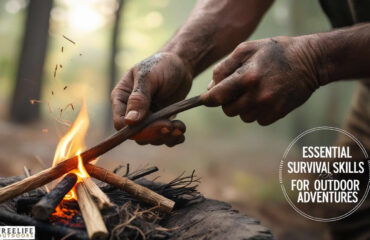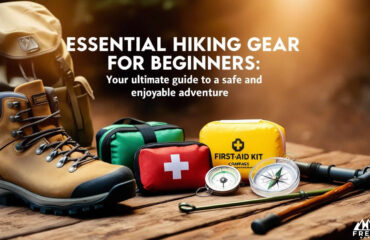
Discover essential wildlife safety tips for families visiting national parks to ensure a safe and enjoyable adventure.
Importance of Wildlife Safety for Families Visiting National Parks
Wildlife safety is paramount for families visiting national parks, as it ensures the well-being of both visitors and the animals that inhabit these natural spaces. National parks are home to a diverse array of wildlife, from majestic bears to elusive mountain lions, each presenting unique challenges and risks. Families should understand that while these encounters can be thrilling, they can also lead to dangerous situations if not approached with caution. With approximately 50 million visitors to national parks each year, the likelihood of encountering wildlife significantly increases, making it essential to adopt safety guidelines to preserve both the natural habitats and visitor experiences.
Preserving wildlife habitats while ensuring visitor safety is crucial for maintaining the delicate balance of these ecosystems. Wildlife safety practices not only protect families but also contribute to the overall health of the park’s ecosystem. For instance, educating visitors on how to act around wildlife helps reduce human-wildlife conflicts, ultimately leading to a more harmonious coexistence between nature and people.
Understanding Wildlife Behavior
Understanding wildlife behavior is an important aspect of ensuring safety during park visits. Different species exhibit distinct behaviors that can help families anticipate and avoid potentially dangerous encounters. For example, bears, known for their unpredictability, can react aggressively if they feel threatened. Learning the signs of bear behavior, such as huffing or swatting at the ground, can provide crucial insights into when to back away.
Similarly, bison—large and powerful animals—can charge unexpectedly. Maintaining a safe distance of at least 25 yards is advisable. Elk, too, can become aggressive during mating seasons, and observing them from afar is critical to prevent provoking them. Familiarity with these behaviors not only enhances safety but also enriches the visitor experience by fostering a deeper appreciation for the animals’ natural habits and habitats.
Safe Distances from Wildlife
When visiting national parks, adhering to safe distance guidelines is essential to ensure both personal safety and the well-being of wildlife. The National Park Service recommends maintaining at least 25 yards (23 meters) from animals such as moose, elk, bighorn sheep, mountain goats, and deer. For more dangerous wildlife like wolves and bears, a minimum distance of 100 yards (91 meters) is necessary. Viewing wildlife from a safe distance, preferably from a vehicle or designated observation area, is the best practice.
It’s important to note that specific parks may have different guidelines based on local wildlife behavior, so checking for park-specific regulations before your visit is crucial. By using binoculars or spotting scopes, families can enhance their wildlife viewing experience while ensuring they stay at a safe distance, thus protecting both themselves and the animals.
Photography Safety Guidelines
Capturing the beauty of wildlife through photography is a popular activity among park visitors; however, safety should always come first. Instead of approaching wildlife for close-up shots, it’s advisable to use a telephoto lens to avoid potential injuries. By staying at a safe distance, families can ensure both their safety and that of the animals. Flash photography should be avoided as it can startle wildlife, possibly provoking aggressive behavior.
Being aware of your surroundings while photographing wildlife is crucial to prevent surprise encounters with other animals. Engaging in guided tours led by knowledgeable rangers can also provide safe opportunities for wildlife photography while ensuring a deeper understanding of the park’s ecosystems. Respecting wildlife and their habitats when capturing images is essential to maintain the integrity of their natural behaviors.
Preparing for Your Visit
Preparing for a national park visit involves thorough research and planning to ensure a safe experience for families. Before heading out, it’s vital to familiarize yourself with the park’s regulations, potential wildlife encounters, and safety tips. Creating an emergency plan for lost or injured family members is necessary, especially considering that cell service may be unreliable in many remote areas. Packing essential supplies such as a first aid kit, water, and non-perishable food will also contribute to a safer experience.
Checking the weather forecast and understanding park conditions will help families pack appropriate clothing and gear. Familiarizing yourself with the park’s layout and available facilities, including ranger stations, is also important. Establishing meeting points in case family members become separated during excursions ensures everyone knows how to regroup safely.
Educating Children About Wildlife Safety
Educating children about wildlife safety is a fundamental aspect of ensuring their protection during national park visits. Teaching them to remain calm and back away slowly if they encounter wildlife helps them respond appropriately in unexpected situations. Discussing the importance of not feeding wildlife—an action that can lead to dangerous encounters and is prohibited—reinforces the need to respect animals and their habitats.
Role-playing various scenarios can help children understand how to react to different wildlife encounters, making them more aware of their surroundings. Providing simple rules to follow, such as staying on designated trails and keeping noise levels down, empowers children to be responsible nature enthusiasts. Utilizing educational materials or participating in park programs can further enhance their understanding of local wildlife and ecosystems.
Respecting Wildlife and the Environment
Respecting wildlife and the environment is crucial for a safe and enjoyable experience in national parks. Following Leave No Trace principles, such as packing out all trash and staying on designated trails, helps minimize human impact on natural habitats. Maintaining group cohesion and keeping noise levels down not only prevents disturbing wildlife but also enhances the experience for all visitors.
Avoiding shortcuts through wildlife areas is essential to minimize habitat disruption. Refraining from approaching or touching wildlife is critical, as this can lead to stress for the animals and potentially dangerous situations for visitors. Educating family members on the ecological importance of wildlife fosters respect and appreciation for the natural world, encouraging responsible behavior during park visits.
Recap of Key Wildlife Safety Tips for Families Visiting National Parks
Adhering to wildlife safety tips is essential for a secure family experience in national parks. Families should implement these guidelines to ensure a safe and enjoyable visit with wildlife while also preserving the natural environment for future generations. Staying informed about park regulations, understanding wildlife behavior, and maintaining safe distances from animals are vital components of a successful trip. Ultimately, practicing responsible behavior contributes to a harmonious coexistence between visitors and the wildlife that inhabit these breathtaking natural landscapes.




